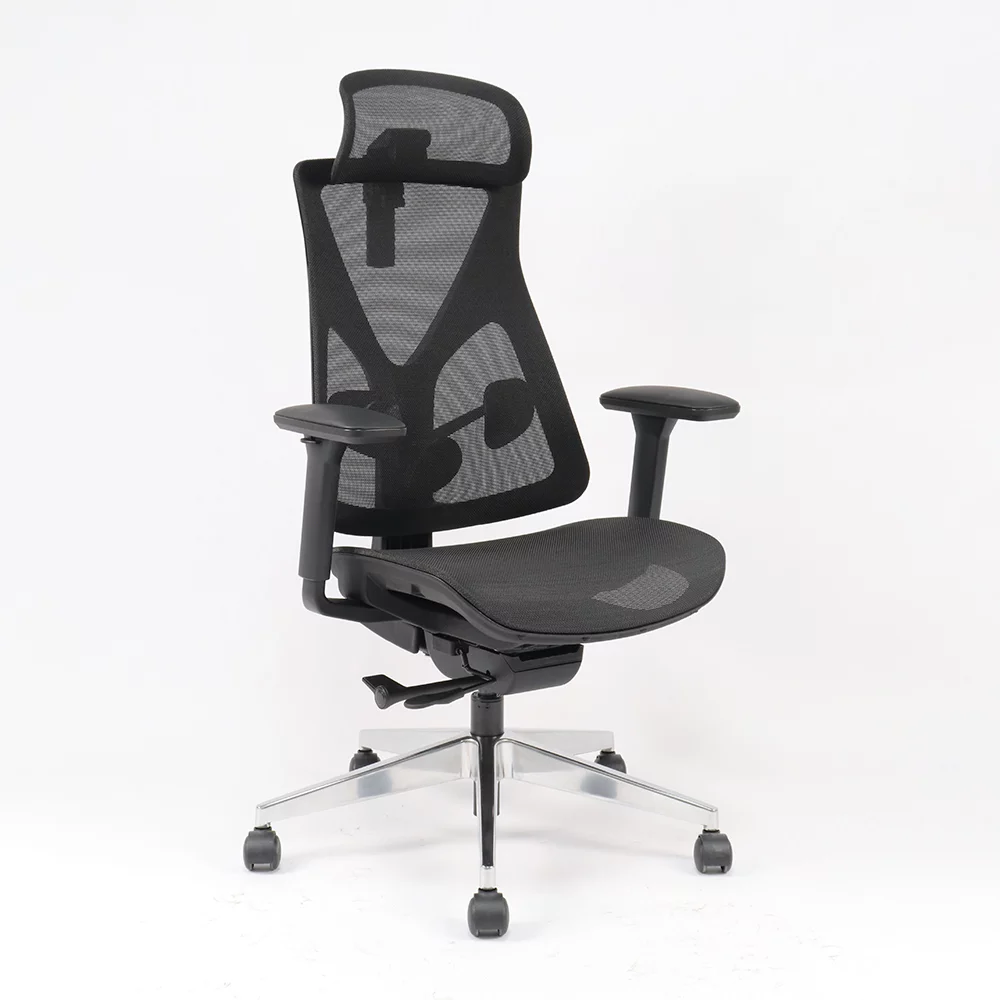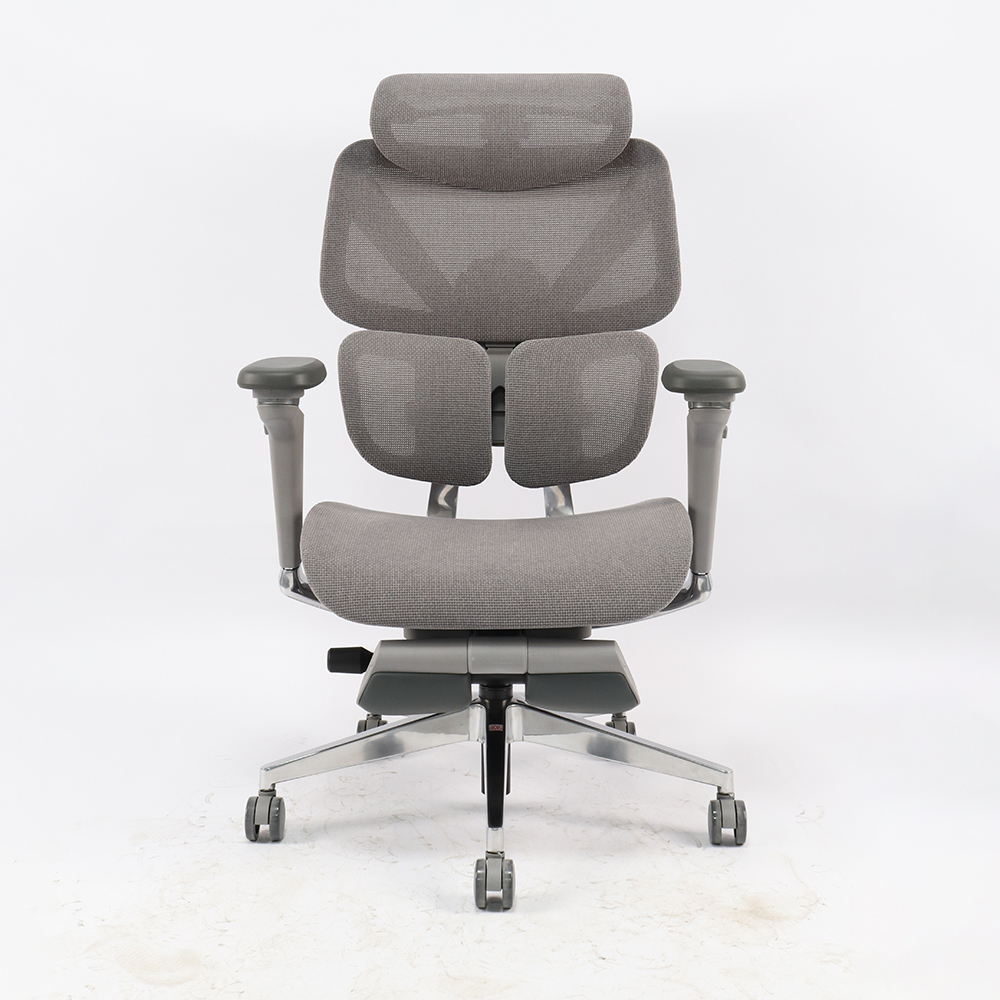If you're selling ergonomic office chairs, you probably already know how vital ergonomics is to customers. But when it comes to tall people, standard office chairs often miss the mark. Chairs that work for the average user frequently cause discomfort, poor posture, or even pain for taller individuals. As more people work from home or spend long hours at desks, the demand for office chairs for tall people has skyrocketed. In this post, you’ll learn exactly what features make an office chair ideal for tall people — based on ergonomic science and real market insights. We’ll also share a concrete business success story from an online seller in Poland, showing how offering premium and affordable tall-friendly chairs can boost sales and customer loyalty. Let’s dive in. Most office chairs are generally designed around average user dimensions—usually around 5’7” to 5’10” height ranges. But tall people, often 6’ and above, have different needs that standard chairs just don’t meet: Insufficient Seat Height: Standard chairs typically max out at seat heights around 18-20 inches. For tall users, this forces their knees higher than optimal, resulting in pressure behind the thighs and poor circulation. Short Backrests: A backrest that doesn’t extend high enough leaves the upper back and shoulders unsupported, leading to slouching and neck strain. Narrow Seat Pans: A narrow or shallow seat pan doesn’t provide enough thigh support, causing discomfort during long sitting periods. Armrests Too Low or Unadjustable: Longer arms and broader shoulders require armrests that can adjust in height, width, and depth, which many standard chairs lack. When these ergonomic mismatches happen, tall users suffer discomfort, fatigue, and risk chronic issues like back pain or repetitive strain injuries. They also tend to be less productive and more dissatisfied at work. The volume of online searches for terms like “office chair tall” reflects this unmet need — a gap savvy retailers and wholesalers can capitalize on. Here’s the bottom line—if a chair is going to work well for taller people, it needs to address these specific ergonomic requirements: This is non-negotiable. Tall users often need seat heights adjustable up to 23 inches or more. The goal: When seated, feet rest flat on the floor (or a footrest), knees bend approximately at 90 degrees, and thighs are parallel to the ground. Without this, pressure builds behind the knees leading to circulation issues and discomfort. Providing a wide seat height range means the chair can accommodate users from 5'10" up to 6'6" or taller, making it versatile and inclusive. Seat depth and width also need to be bigger. For tall users, seat depth should be at least 20 inches—sometimes 22 inches or more. This length ensures full thigh support without the seat edge digging into the back of the knees. A wider seat pan (20-22 inches) allows comfortable hip placement and accommodates broader builds without feeling cramped. Together, these features prevent squished legs and boost all-day comfort. The backrest needs to be taller and supportive. Taller backrests extend higher to support the entire spine, from lower back to shoulders. Adjustable lumbar support lets users fine-tune the chair to their lower back curve, essential for reducing strain during long sitting sessions. Without a high backrest, taller users may end up slouching or hunching, which is bad for posture and long-term health. Not all office chairs have this, but it can be a game-changer for tall people. A headrest supports the neck and head, helping prevent slouching and neck fatigue. It should be height adjustable or removable, catering to users 6’ and taller. Tall people often have larger body frames, so durability matters. Chairs designed for tall people usually have reinforced steel frames. Weight capacities of 300 pounds or more are common. Using premium materials ensures the chair lasts longer—even under heavy, daily use in commercial environments. This reassurance is key for businesses buying in bulk and selling to discerning customers. Armrests must work for longer arms and broader shoulders. 4D armrests can be adjusted in height, width, depth, and pivot angle. This flexibility lets tall users keep shoulders relaxed while typing or working. Fixed or minimally adjustable armrests cause strain and tension in the upper body. Dynamic sitting improves comfort and circulation. Synchro-tilt and multi-tilt functions allow the seat and backrest to move in harmony. This encourages posture changes and prevents stiffness, especially important for longer legs. Meet a real-world example of smart business strategy in action. Background One of our Polish office chair partner specializing in office furniture noticed a trend: tall customers abandoned carts or left negative feedback about lack of tall-friendly options. Their analytics showed increasing searches for “office chair tall,” but their catalog primarily featured standard-size chairs — frustrating taller buyers over 190 cm (6’3”). Challenge Their premium product lines included heavyweight brands like Herman Miller Aeron Size C and a locally-distributed EU-certified heavy-duty mesh chair. These met ergonomic specifications perfectly: seat heights ≥23”, deep pans, tall backrests, and adjustable 4D armrests. But here was the hurdle: The premium price tag was too high for many budget-conscious customers. Strategy The retailer made a smart pivot: Keep Premium Brands: Hermen Miller Aeron Size C and the certified mesh chair remained flagship items for buyers seeking ultimate quality and ergonomics. Add Cost-Effective Alternatives: Introduced affordable, but still tall-friendly chairs like Deluxstar model, DLS-D3. These products also offered ≥23” seat height, deep seat pans, 4D armrests, and solid build quality at lower price points. Create a Dedicated “For Tall People” Landing Page: Optimized for “office chair tall,” this page compared premium vs. affordable options side-by-side. Enhanced Customer Support: Offered personalized fitting consultations via chat/video and a “fit guarantee” to reduce purchase hesitation. Rich Content Investments: Included detailed specs charts, video reviews, and genuine customer testimonials. Results Within just six months: The tall chair category became the fastest-growing segment on their site. Conversion rates doubled among tall buyers. Average order values increased by 25% as customers upgraded for ergonomics. Return rates dropped due to better fit and satisfaction. The retailer gained a reputation as “the tall office chair specialist” across Poland and neighboring EU markets. Offering both premium and cost-effective tall-friendly chairs, combined with clear, trust-building information, is a winning formula for growth and customer loyalty. If you’re ready to grow your furniture business and tap into a lucrative niche, start prioritizing office chairs for tall people. Stock both premium and affordable models with the right ergonomic features. Provide clear, helpful guides to help your customers find their perfect fit. Your tall customers—and your bottom line—will thank you. Q: What weight capacity should I expect? Q: Are affordable tall chairs suitable for both office and home use? Q: What’s the typical price range? Q: Are there EU-certified budget options? Q: How do I help customers pick the right size?Why Standard Office Chairs Fail Tall Users
Key Features That Make an Office Chair Ideal for Tall People
1. Extra-High Adjustable Seat Height
2. Deep and Wide Seat Pan
3. High Backrest & Adjustable Lumbar Support
4. Adjustable Headrest
5. Heavy-Duty Construction and High Weight Capacity
6. Highly Adjustable 4D Armrests
7. Seat Angle and Tilt Mechanisms
Real Business Case: Premium & Cost-Effective Office Chairs for Tall People — An Online Seller in Poland


Conclusion
FAQ: Common Questions Retailers & Distributors Get About Office Chairs for Tall People
A: Most tall office chairs support 300 lbs or more, accommodating larger frames safely.
A: Yes. While premium models offer extra features, budget-friendly tall chairs meet ergonomic basics for both environments.
A: Budget models usually range from $80 to $100, while premium chairs can cost up to $250 or more.
A: Yes, many EU-based manufacturers produce mesh and task chairs certified to relevant safety and durability standards.
A: Look for chairs with seat heights ≥22”, seat depths ≥20”, high backrests, and provide fitting guides or consultations.

-
Home
- About Us
- Products
-
News
-
Case
-
Factory Show
-
Factory Panorama
-
Iron Raw Materials
-
Iron Punching and Bending Equipment
-
Iron Parts Welding Manipulator
-
Iron Parts Powder Coating Line
-
Semi-Finished Iron Parts
-
Precision Plastic Parts-Injection Molding
-
Semi-Finished Plastic Parts
-
Wood Board Area for chair seat
-
Chair Sponge Area
-
Fabric Sewing Area
-
Semi-Finished Chair
-
Packaging Area
-
Warehouse
-
Salt Spray Testing Equipment
-
Study Chair Armrest Back Double-Layer Testing
-
Sample Room
-
Iron Parts Welding Manipulator
-
Factory Panorama
-
videos
-
Contact Us
Menu
- Home
- About Us
- Company Style
- Certificate
- Exhibition
- FAQ
- Brand
- Service
- Delivery
- Responsibility
- Products
- Kids Study Table
- Kids Study Chair
- Kids Study Table And Chair Set
- Kids Table
- Office Ergonomic Chair
- Led Study Lamp
- News
- Case
- Factory Show
- Factory Panorama
- Iron Raw Materials
- Iron Punching and Bending Equipment
- Iron Parts Welding Manipulator
- Iron Parts Powder Coating Line
- Semi-Finished Iron Parts
- Precision Plastic Parts-Injection Molding
- Semi-Finished Plastic Parts
- Wood Board Area for chair seat
- Chair Sponge Area
- Fabric Sewing Area
- Semi-Finished Chair
- Packaging Area
- Warehouse
- Salt Spray Testing Equipment
- Study Chair Armrest Back Double-Layer Testing
- Sample Room
- Iron Parts Welding Manipulator
- videos
- Contact Us
Search
